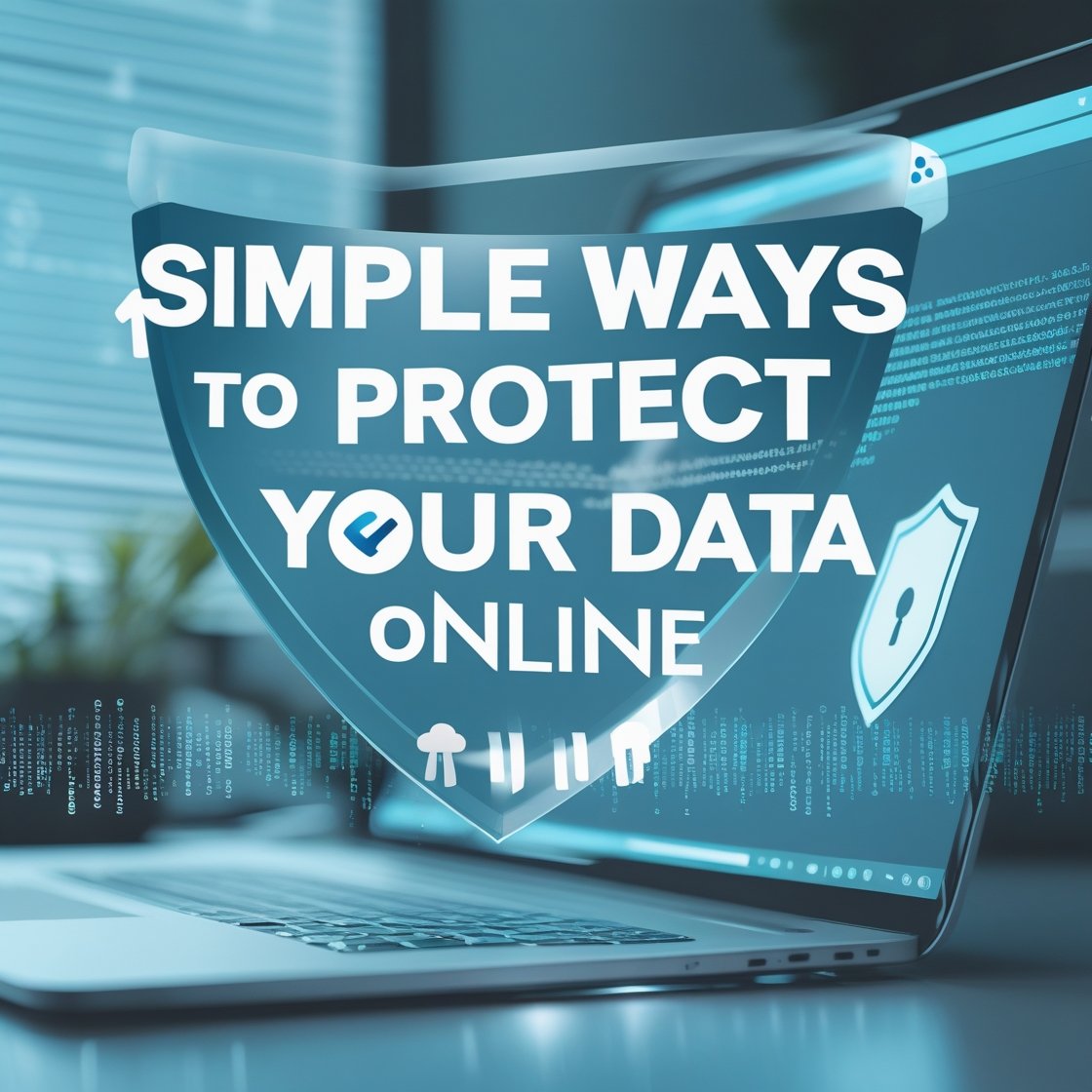Meta Description: Learn easy and effective ways to keep your personal data safe online in 2025.
🛡️ Simple Ways to Protect Your Data Online in 2025
In today’s digital age, protecting your personal information online is more important than ever. With cyber threats becoming increasingly sophisticated, it’s essential to adopt proactive measures to safeguard your data. This comprehensive guide provides practical and easy-to-understand strategies to enhance your online privacy and security.
🔐 1. Use Strong and Unique Passwords
One of the most fundamental steps in protecting your online accounts is creating strong and unique passwords. Avoid using easily guessable information such as your name, birthdate, or common words. Instead, combine uppercase and lowercase letters, numbers, and special characters to create a complex password. Utilize a password manager to generate and store these passwords securely, ensuring you don’t have to remember each one individually.
🛡️ 2. Enable Two-Factor Authentication (2FA)
Two-factor authentication adds an extra layer of security to your online accounts. By requiring a second form of verification, such as a code sent to your phone or an authentication app, 2FA makes it significantly harder for unauthorized individuals to access your accounts. Enable 2FA wherever possible, especially for sensitive accounts like email, banking, and social media platforms.(pandasecurity.com)
🧼 3. Regularly Update Software and Devices
Keeping your software and devices up to date is crucial in protecting against known vulnerabilities. Software updates often include patches that fix security flaws, making it harder for cybercriminals to exploit them. Set your devices to automatically install updates, and regularly check for updates on applications and operating systems to ensure you have the latest security enhancements.(1waydigital)
🌐 4. Be Cautious with Public Wi-Fi
Public Wi-Fi networks, such as those in cafes or airports, are often unsecured and can be a hotspot for cybercriminals. Avoid accessing sensitive information, like online banking or shopping accounts, while connected to public Wi-Fi. If you must use public Wi-Fi, consider using a Virtual Private Network (VPN) to encrypt your internet connection and protect your data from potential threats.(O’Brien & Associates)
📧 5. Be Wary of Phishing Scams
Phishing scams involve fraudulent attempts to obtain sensitive information by disguising as trustworthy entities. Be cautious of unsolicited emails, messages, or phone calls requesting personal information or urging you to click on suspicious links. Always verify the authenticity of such communications by contacting the organization directly through official channels before providing any information.
🔒 6. Use Secure Websites
When entering personal information online, ensure the website is secure. Look for “https://” in the URL and a padlock icon in the address bar, indicating that the site uses encryption to protect your data. Avoid entering sensitive information on websites that lack these security indicators, as they may not provide adequate protection against data breaches.
🧹 7. Regularly Monitor Your Accounts
Regularly reviewing your bank statements, credit reports, and online accounts can help detect unauthorized activity early. Set up account alerts to notify you of any suspicious transactions or changes. If you notice any discrepancies, report them immediately to the relevant institution to mitigate potential damage.(O’Brien & Associates)
🧠 8. Educate Yourself and Others
Staying informed about the latest cybersecurity threats and best practices is essential in protecting your data. Educate yourself and your family members about the risks of cyber threats and the importance of online privacy. Share knowledge about recognizing phishing attempts, creating strong passwords, and maintaining secure online habits to foster a safer digital environment for everyone.
🧾 9. Limit Sharing of Personal Information
Be mindful of the personal information you share online, especially on social media platforms. Avoid posting sensitive details such as your full name, address, phone number, or financial information. Review and adjust your privacy settings on social media accounts to control who can see your posts and personal details, reducing the risk of identity theft and unwanted solicitations.(O’Brien & Associates)
🗑️ 10. Securely Dispose of Old Devices and Accounts
Before disposing of old devices or accounts, ensure all personal information is securely erased. Perform a factory reset on smartphones and computers, and remove any personal data from cloud storage services. For online accounts you no longer use, delete them to prevent unauthorized access and potential misuse of your information.(Security Quotient)
🧳 11. Be Cautious with Travel and Location Sharing
When traveling, be cautious about sharing your location and travel plans online. Avoid posting real-time updates about your whereabouts, as this information can be exploited by malicious actors. Adjust your device settings to limit location tracking and review app permissions to ensure only necessary applications have access to your location data.
🧩 12. Use Privacy-Focused Tools and Services
Consider using privacy-focused tools and services to enhance your online security. Browsers like Brave or Firefox offer enhanced privacy features, and search engines like DuckDuckGo do not track your search history. Additionally, secure messaging apps like Signal provide end-to-end encryption, ensuring your communications remain private.(WIRED, Teen Vogue)
🧾 Conclusion
Protecting your personal data online in 2025 requires vigilance, awareness, and proactive measures. By implementing the strategies outlined in this guide, you can significantly reduce the risk of cyber threats and safeguard your online privacy. Remember, cybersecurity is an ongoing process, and staying informed about the latest threats and best practices is essential in maintaining a secure digital presence. Prioritize your online safety by adopting these simple yet effective steps to protect your data in today’s interconnected world.




